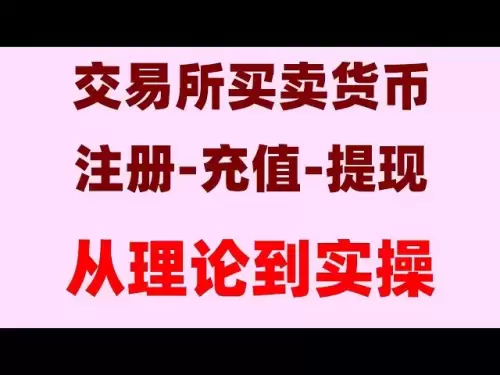-
 Bitcoin
Bitcoin $103,296.9995
-0.52% -
 Ethereum
Ethereum $2,404.9318
-4.14% -
 Tether USDt
Tether USDt $1.0001
0.05% -
 XRP
XRP $2.3122
-3.42% -
 BNB
BNB $639.1923
-0.89% -
 Solana
Solana $162.2044
-4.54% -
 USDC
USDC $0.9999
0.02% -
 Dogecoin
Dogecoin $0.2183
-1.22% -
 Cardano
Cardano $0.7246
-4.29% -
 TRON
TRON $0.2642
-3.18% -
 Sui
Sui $3.7081
-3.44% -
 Chainlink
Chainlink $15.1879
-3.20% -
 Avalanche
Avalanche $21.7069
-5.64% -
 Stellar
Stellar $0.2808
-3.65% -
 Hyperliquid
Hyperliquid $26.0685
-2.89% -
 Shiba Inu
Shiba Inu $0.0...01410
-3.27% -
 Hedera
Hedera $0.1884
-3.03% -
 UNUS SED LEO
UNUS SED LEO $8.5988
-0.85% -
 Bitcoin Cash
Bitcoin Cash $382.7649
-3.97% -
 Toncoin
Toncoin $3.0333
-2.61% -
 Litecoin
Litecoin $95.8239
-2.60% -
 Polkadot
Polkadot $4.5075
-4.91% -
 Monero
Monero $344.2888
0.15% -
 Bitget Token
Bitget Token $5.1246
-0.32% -
 Pepe
Pepe $0.0...01293
0.73% -
 Dai
Dai $0.9999
0.00% -
 Pi
Pi $0.7318
-1.62% -
 Ethena USDe
Ethena USDe $1.0005
-0.01% -
 Uniswap
Uniswap $5.7685
-3.17% -
 Bittensor
Bittensor $398.5430
-6.92%
What are the common Coin Selection algorithms?
Understanding the mechanisms behind Coin Selection algorithms is crucial for ensuring optimal cryptocurrency spending, minimizing transaction fees, and meeting specific transaction requirements.
Feb 21, 2025 at 09:48 am
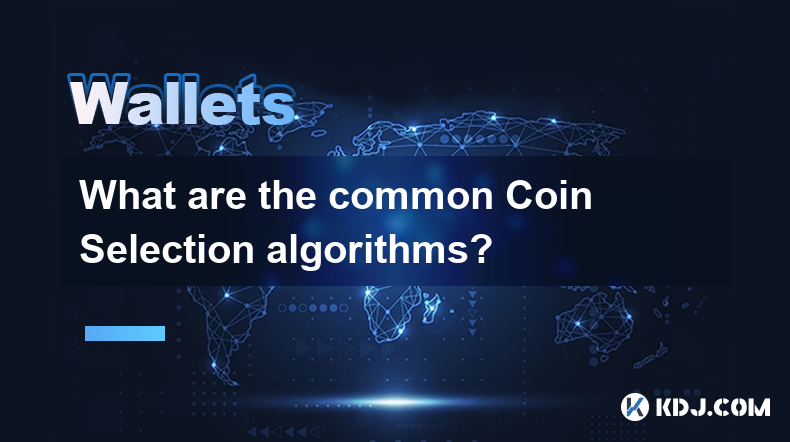
Key Points:
- Coin Selection algorithms play a critical role in determining which coins to spend from a cryptocurrency wallet.
- Various algorithms exist, each with its advantages and disadvantages.
- Users should consider their specific requirements and transaction conditions to select the most appropriate algorithm.
- Understanding the underlying mechanisms of Coin Selection algorithms is essential for effective cryptocurrency management.
Coin Selection Algorithms:
1. Round Robin:
- Selects coins in the order they appear in the wallet.
- Ensures even distribution of coin usage and can be useful for wallets with a large number of coins.
- Does not consider coin age or transaction fees, which can lead to suboptimal spending patterns.
2. Highest Value First:
- Selects coins with the highest face value first.
- Reduces transaction fees by spending larger coins that incur fewer fees.
- Can lead to holding on to smaller coins indefinitely, which may not be desired.
3. Lowest Value First:
- Selects coins with the lowest face value first.
- Ensures the use of smaller coins, which can be desirable for transactions with low amounts.
- May lead to accumulation of larger coins with higher transaction fees.
4. Oldest Coin First (FIFO):
- Selects coins based on the first-in-first-out principle.
- Spends coins that have been received earliest, potentially ensuring they spend mature coins with lower transaction fees.
- Does not consider coin value, which can lead to suboptimal spending patterns.
5. Newest Coin First (LIFO):
- Selects coins based on the last-in-first-out principle.
- Spends coins that have been received most recently, potentially reducing the risk of holding on to older coins that may lose value.
- Can lead to higher transaction fees if newer coins are associated with higher fees.
6. Minimum Coin Age First:
- Selects coins with the lowest coin age, which represents the time since they were received.
- Prevents double-spending by ensuring coins are not spent before they reach the required coin age.
- Can lead to holding on to older coins with higher transaction fees.
7. Maximum Coin Age First:
- Selects coins with the highest coin age, which represents the time since they were received.
- Promotes coin maturation, reducing transaction fees and enhancing privacy by avoiding spending recently received coins.
- May lead to holding on to smaller coins indefinitely, which may not be desired.
FAQs:
Q: What are the benefits of using a Coin Selection algorithm?
A: Coin Selection algorithms ensure efficient spending of cryptocurrency coins, reduce transaction fees, prevent double-spending, enhance privacy, and facilitate coin maturation.
Q: Which Coin Selection algorithm is the best?
A: The best algorithm depends on individual requirements and transaction conditions. For instance, Round Robin is suitable for large wallets, Highest Value First reduces fees, Lowest Value First ensures smaller coin usage, Oldest Coin First prevents double-spending, Newest Coin First enhances privacy, Minimum Coin Age First reduces double-spending risks, and Maximum Coin Age First promotes coin maturation.
Q: Can I create my own Coin Selection algorithm?
A: Yes, it is possible to develop a custom Coin Selection algorithm that meets specific requirements. However, it requires a thorough understanding of the underlying principles and transaction conditions.
Disclaimer:info@kdj.com
The information provided is not trading advice. kdj.com does not assume any responsibility for any investments made based on the information provided in this article. Cryptocurrencies are highly volatile and it is highly recommended that you invest with caution after thorough research!
If you believe that the content used on this website infringes your copyright, please contact us immediately (info@kdj.com) and we will delete it promptly.
- Punisher Coin (PUN) Crypto Presale: Aiming to Outperform WIF and BOME
- 2025-05-19 16:25:12
- The WIF Price Has Performed Well in the Past Few Weeks as It Jumped by Over 215% From Its Lowest Point in April
- 2025-05-19 16:25:12
- Metaplanet, Japan’s MicroStrategy, Announces Another BTC Purchase
- 2025-05-19 16:20:13
- Bitget Wallet Celebrates 80 Million Users with a 7th Birthday Twitter Space AMA Featuring Notable Web3 Figures
- 2025-05-19 16:20:13
- Crypto market momentum is accelerating heading into mid-May as digital assets show renewed signs of strength.
- 2025-05-19 16:15:14
- BYDFi Launches MoonX, a Web3 On-Chain Trading Tool to Trade Meme Coins
- 2025-05-19 16:15:14
Related knowledge
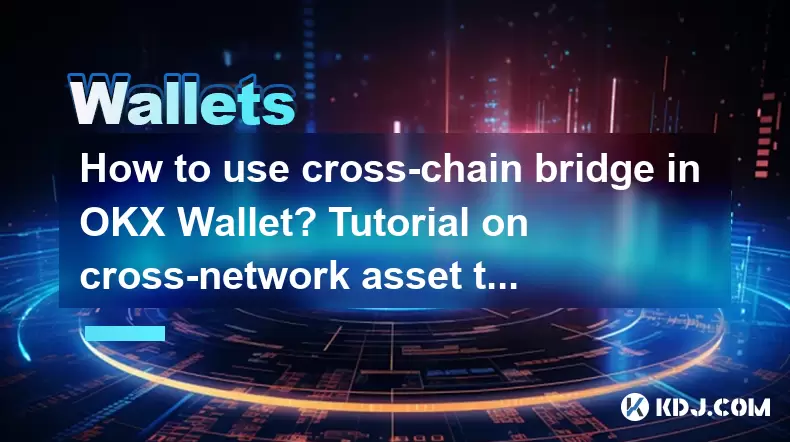
How to use cross-chain bridge in OKX Wallet? Tutorial on cross-network asset transfer
May 19,2025 at 01:35am
The OKX Wallet offers a robust solution for users looking to transfer assets across different blockchain networks through its cross-chain bridge feature. This functionality allows users to move their cryptocurrencies from one blockchain to another seamlessly, enhancing the flexibility and utility of their digital assets. In this tutorial, we will walk t...
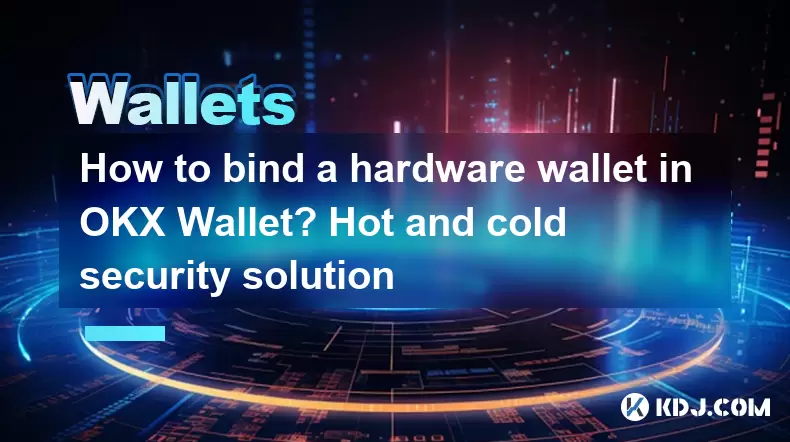
How to bind a hardware wallet in OKX Wallet? Hot and cold security solution
May 17,2025 at 07:14pm
Binding a hardware wallet to your OKX Wallet provides an additional layer of security, combining the convenience of a hot wallet with the robust security of a cold wallet. This process ensures that your private keys remain offline and are protected against online threats. Here’s a detailed guide on how to bind a hardware wallet in OKX Wallet, focusing o...
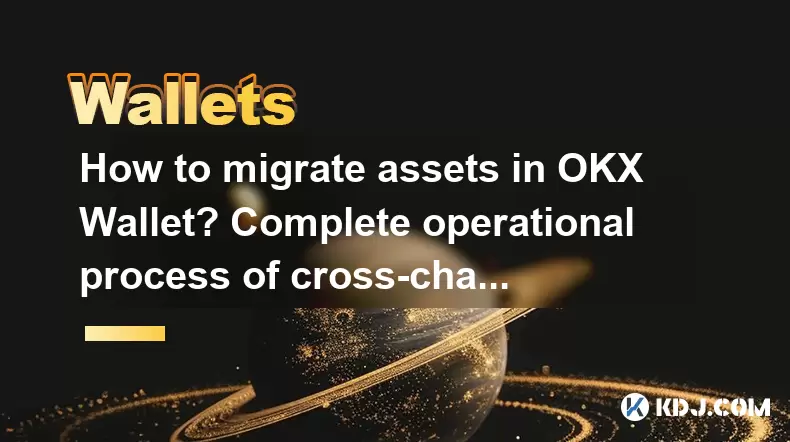
How to migrate assets in OKX Wallet? Complete operational process of cross-chain transfer
May 19,2025 at 04:07am
Migrating assets in the OKX Wallet through a cross-chain transfer is a critical process for users who wish to move their cryptocurrencies from one blockchain to another. This operation can be essential for various reasons, such as seeking better transaction speeds, lower fees, or simply wanting to engage with different decentralized applications (dApps)...
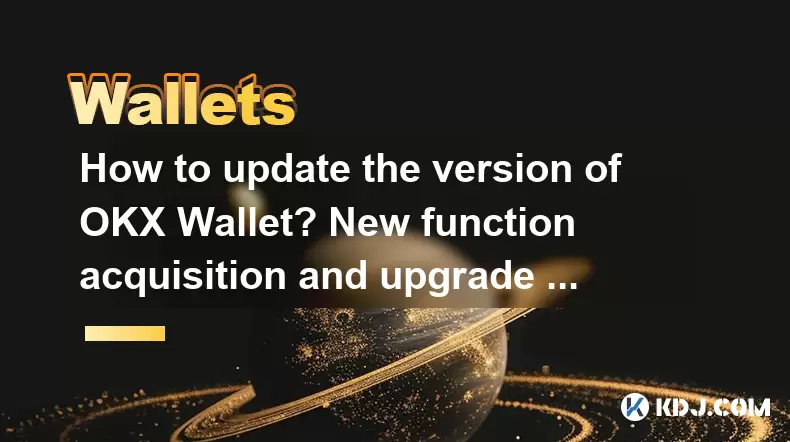
How to update the version of OKX Wallet? New function acquisition and upgrade guide
May 17,2025 at 11:00am
Introduction to OKX Wallet UpdatesUpdating the OKX Wallet is essential for users who want to stay current with the latest features and security enhancements. OKX Wallet regularly releases updates to improve user experience, add new functionalities, and ensure the safety of your assets. This guide will walk you through the process of updating your OKX Wa...
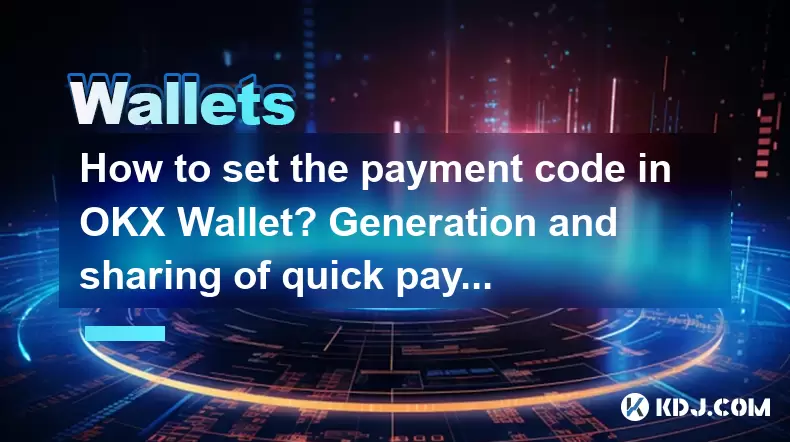
How to set the payment code in OKX Wallet? Generation and sharing of quick payment
May 18,2025 at 03:22pm
Setting up the payment code in OKX Wallet is an essential feature for users who wish to engage in quick and secure cryptocurrency transactions. The payment code, often referred to as a QR code, simplifies the process of sending and receiving cryptocurrencies. In this article, we will guide you through the steps to generate and share your payment code in...
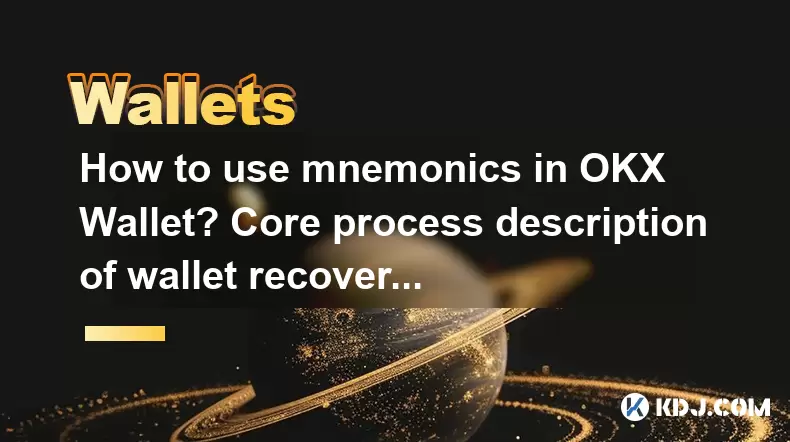
How to use mnemonics in OKX Wallet? Core process description of wallet recovery
May 18,2025 at 08:01am
Using mnemonics in the OKX Wallet is a crucial aspect of managing your cryptocurrency securely. Mnemonics, also known as seed phrases, are a series of words that serve as a backup for your wallet. They are essential for wallet recovery in case you lose access to your device or need to restore your wallet on another device. This article will guide you th...

How to use cross-chain bridge in OKX Wallet? Tutorial on cross-network asset transfer
May 19,2025 at 01:35am
The OKX Wallet offers a robust solution for users looking to transfer assets across different blockchain networks through its cross-chain bridge feature. This functionality allows users to move their cryptocurrencies from one blockchain to another seamlessly, enhancing the flexibility and utility of their digital assets. In this tutorial, we will walk t...

How to bind a hardware wallet in OKX Wallet? Hot and cold security solution
May 17,2025 at 07:14pm
Binding a hardware wallet to your OKX Wallet provides an additional layer of security, combining the convenience of a hot wallet with the robust security of a cold wallet. This process ensures that your private keys remain offline and are protected against online threats. Here’s a detailed guide on how to bind a hardware wallet in OKX Wallet, focusing o...

How to migrate assets in OKX Wallet? Complete operational process of cross-chain transfer
May 19,2025 at 04:07am
Migrating assets in the OKX Wallet through a cross-chain transfer is a critical process for users who wish to move their cryptocurrencies from one blockchain to another. This operation can be essential for various reasons, such as seeking better transaction speeds, lower fees, or simply wanting to engage with different decentralized applications (dApps)...

How to update the version of OKX Wallet? New function acquisition and upgrade guide
May 17,2025 at 11:00am
Introduction to OKX Wallet UpdatesUpdating the OKX Wallet is essential for users who want to stay current with the latest features and security enhancements. OKX Wallet regularly releases updates to improve user experience, add new functionalities, and ensure the safety of your assets. This guide will walk you through the process of updating your OKX Wa...

How to set the payment code in OKX Wallet? Generation and sharing of quick payment
May 18,2025 at 03:22pm
Setting up the payment code in OKX Wallet is an essential feature for users who wish to engage in quick and secure cryptocurrency transactions. The payment code, often referred to as a QR code, simplifies the process of sending and receiving cryptocurrencies. In this article, we will guide you through the steps to generate and share your payment code in...

How to use mnemonics in OKX Wallet? Core process description of wallet recovery
May 18,2025 at 08:01am
Using mnemonics in the OKX Wallet is a crucial aspect of managing your cryptocurrency securely. Mnemonics, also known as seed phrases, are a series of words that serve as a backup for your wallet. They are essential for wallet recovery in case you lose access to your device or need to restore your wallet on another device. This article will guide you th...
See all articles























